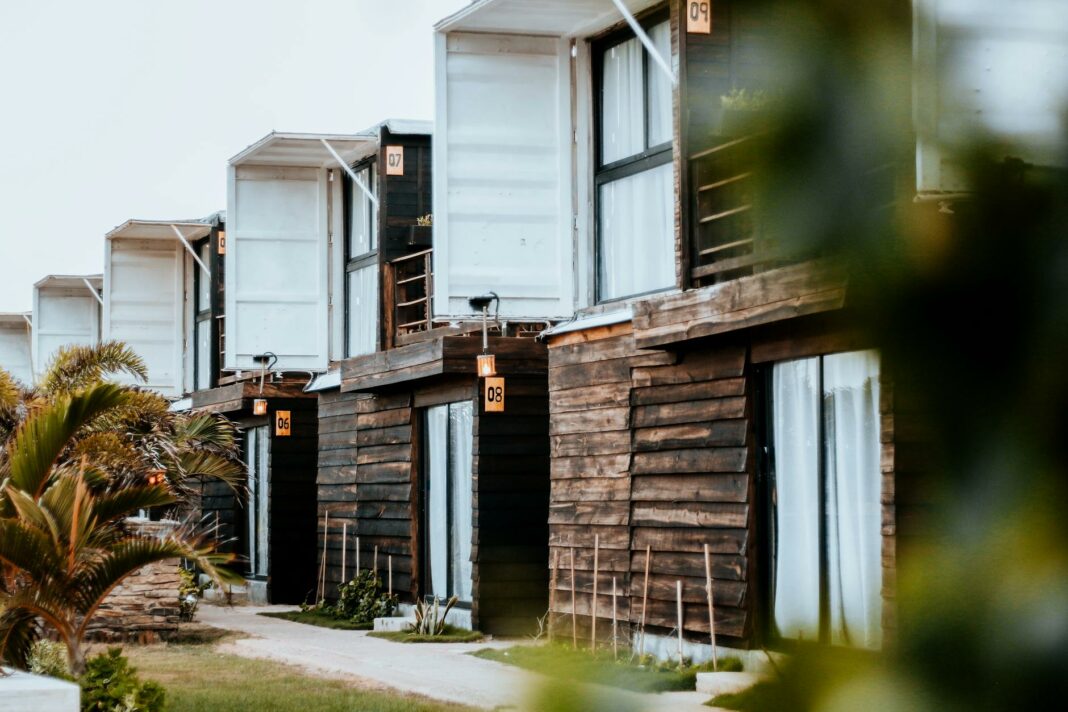As the sun sets over the lush greens of a meticulously manicured golf course, many dreamers envision their ideal golfing getaway. Indeed, there’s something undeniably enchanting about the combination of stunning natural landscapes and the thrill of the perfect swing. However, beneath this picturesque facade lies a question that might not have crossed your mind: is your dream golf escape secretly harming the planet? This blog post dives deep into how popular golfing destinations might be causing more damage to the environment than you ever imagined. Together, we will explore the hidden costs of those pristine fairways and waterways.
By examining the ecological footprint of these retreats, we aim to educate the avid golf enthusiast and offer insights on how to embrace eco-friendliness without sacrificing that dream experience. Sustainable practices can transform the golf industry, enriching both your travels and the environments you enjoy. Prepare to challenge your conventional thinking about golf getaways as we delve into the consensus that greener practices can elevate your adventures, making them even more fulfilling. Whether you are a seasoned player or an eager newbie, understanding the impact of your choices will empower you to be a steward of the great outdoors while still relishing in your favorite pastime.
When envisioning a golf course, one often pictures sprawling greens bordered by pristine landscapes. However, the construction and maintenance of these courses come with significant environmental costs that are often overlooked. For starters, vast amounts of land are cleared, disrupting local ecosystems and wildlife habitats. This disruption leads to a decline in biodiversity, as native plants and animals are displaced. Additionally, the manicured beauty we admire comes at the expense of surrounding environments, including soil degradation which can result in erosion and land loss over time.
Furthermore, many golf courses are situated in areas that require constant artificial irrigation to maintain their lush appearance. This practice not only strains local water supplies but also affects nearby ecosystems dependent on these natural resources. As such, it becomes crucial for players to recognize the impact these courses have on the planet and to consider how our love for golf can coexist with environmental stewardship.
The staggering amounts of water that golf courses consume—especially in areas with scarce water resources—can feel shocking. On average, a single 18-hole golf course uses around 300,000 gallons of water daily, primarily for irrigation. This excessive water usage can threaten local water reserves and alter the surrounding hydrology, impacting everything from community supply to wildlife sustenance. In arid and drought-stricken regions, aquifers can rapidly diminish due to over-extraction, causing long-reaching effects on the environment and a cascading crisis for future generations.
As golf enthusiasts, it becomes our responsibility to seek alternatives that mitigate this drain on precious resources. For instance, courses that utilize drought-resistant grasses and employ smart irrigation techniques can substantially reduce their water footprint. By supporting such eco-conscious establishments, golfers contribute to a future where enjoyment does not come at the expense of nature.
While golf courses may appear as idyllic landscapes, the harsh reality often involves the extensive use of chemicals such as pesticides and fertilizers, which can execute negative consequences on the local ecosystem. These substances, while meant to keep the courses looking immaculate, can leach into nearby waterways, leading to pollution that harms both aquatic life and drinking water supplies. For instance, harmful runoff can create dead zones in bodies of water, drastically reducing biodiversity and affecting entire food networks.
Moreover, golf course maintenance practices typically rely on monoculture techniques, which can lead to soil nutrient depletion over time. It is essential to recognize that sustainable alternatives, like organic fertilizers and integrated pest management, can significantly lessen environmental impact. Emphasizing education and advocacy for greener practices within the golf industry helps foster a healthier relationship between players and the environment, promoting conservation while still delivering memorable experiences on the green.
Traveling to and from golf courses, especially those located in remote or idyllic destinations, contributes significantly to carbon emissions. Whether you’re flying across the country or driving long distances, transport can heavily impact your overall environmental footprint. This aspect of golfing is often ignored in the excitement of planning the perfect getaway, but it’s essential to acknowledge how our travel habits affect the planet.
<pTo mitigate this impact, consider options that reduce your carbon footprint. Opt for local courses or those that promote eco-friendly transport options, such as electric shuttles or bike rentals. Embracing carpooling arrangements can also spread the joy of golf while lightening the load on our planet. Small but impactful changes like these encourage a culture of sustainability within the golfing community while allowing us to enjoy our favorite sport more responsibly.
Taking steps towards eco-friendly golfing practices is not only beneficial for the environment; it enhances your experience on the course. Many golf courses are now focusing on sustainable practices, including better water management systems, native landscaping, and wildlife habitats that promote biodiversity. Courses that prioritize these practices create more vibrant ecosystems for all to enjoy, which can enrich the golfing experience tremendously.
Moreover, a shift towards sustainable golf means utilizing equipment designed with the environment in mind. Look out for brands that produce eco-conscious golf balls and tees made from biodegradable materials. Making a conscious choice to play at courses that are committed to minimizing their environmental impact supports a broader movement that can reshape the way the sport is played and appreciated worldwide.
Finding sustainable golfing destinations is easier than ever, with many resorts and courses leading the way in environmental conservation. Places that incorporate eco-friendly design—like those minimizing their water usage through innovative landscaping or utilizing renewable energy—are soaring in popularity. Consider planning your next golf getaway to resorts known for their commitment to sustainability, where the love of the game meets the love of the planet.
Some distinguished organizations actively promote sustainable practices across the golf travel sector, showcasing courses that prioritize eco-conscious efforts. By seeking out and supporting these destinations, golf enthusiasts not only enjoy breathtaking landscapes and top-tier facilities but also contribute to the conservation of our planet, making their experience even more rewarding and meaningful.
With every swing of the club and each perfectly executed putt, golfers have the power to advocate for the health and well-being of our natural world. By staying informed and actively choosing environmentally friendly practices, players can elevate their love for golf into a force for good. The dream golfing getaway can evolve into a reality that promotes not just individual joy but also the preservation of the beautiful planet we all inhabit.
Ultimately, the responsibility falls on all of us to create awareness and champion sustainable initiatives wherever possible. Harnessing the passion for this cherished sport while prioritizing the health of our ecosystems ensures future generations will still experience the thrill of a perfect drive surrounded by the beauty of nature. Your next golf adventure could not only deliver the personal joy you seek but also become an integral part of a larger movement toward sustainability in the sport.
What can I do to support eco-friendly golf practices? Be proactive! Choose courses that prioritize sustainability. Bring awareness to your golfing community about the importance of eco-conscious practices and advocate for local courses to adopt greener methods.
Are all golf destinations equally harmful to the environment? Not at all. Many golf destinations are actively working to minimize their impact. Research and seek out those that are committed to sustainability in their operations.
Can I play golf while being environmentally conscious? Absolutely! By being mindful of the courses you choose, the equipment you use, and your overall travel footprint, you can enjoy golf and have a positive impact on the planet.
Image Credit: Pexels





